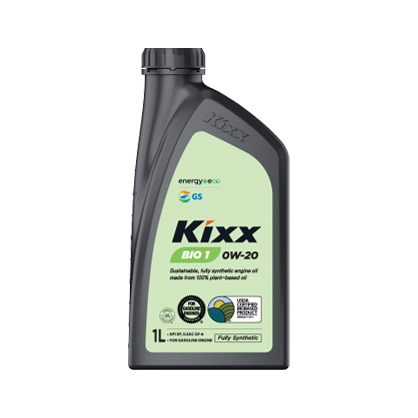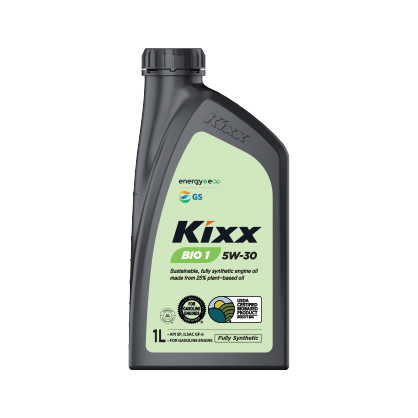![[KixxPedia] Engine Oil Viscosity Explained 1](https://news.kixxoil.com/wp-content/uploads/2022/04/1header-2.jpg)
What is engine oil viscosity and why is it so important?
Engine oil viscosity refers to an oil’s resistance to flow and is a critical factor in engine performance, wear protection and fuel efficiency. It also affects driving comfort, engine cleanliness and overall performance, making it essential to choose an engine oil suited to your driving habits and external environment to reduce costs and extend vehicle life. Here are some tips to help you choose wisely.
![[KixxPedia] Engine Oil Viscosity Explained 2 Kixx G1 SP’s viscosity indicating its performance under a wide temperature range](https://news.kixxoil.com/wp-content/uploads/2022/04/2본문_1-2.jpg)
How to read the numbers on engine oil labels.
How is engine oil viscosity classified?
How are 5W-30 and 0w-30 different? Which one should you choose between 10W-20 and 10W-30? To help you understand the meaning behind the mystery codes marked on the labels of engine oils, here’s engine oil grades explained. SAE International, formerly the Society of Automotive Engineers, sets the standard in classifying engine oils. SAE oil grades such as 5W-30 and 10W-40, printed on the oil container, give indicators of how the product will perform in your engine.
The closer the number before the “W” is to 0, the thinner the oil and the better it flows at low temperatures. The number after the letter “W” indicates the oil’s viscosity at high temperatures. The higher this number, the heavier or thicker the viscosity, resulting in better engine protection.
What’s the difference between monograde and multi-grade engine oil?
According to SAE International, engine oils with a single number like SAE 10W, SAE 30 or SAE 40 are monograde, while those with two numbers like 5W-30 or 15W-40 are multi-grade. A multi-grade oil’s viscosity has been formulated to adapt to both low- and high-temperature environments. Accordingly, in countries that experience distinct seasons with varying temperatures, it is more appropriate to use a multi-grade engine oil.
![[KixxPedia] Engine Oil Viscosity Explained 9 Engine oil viscosity chart explaining the characteristics of an engine oil in terms of viscosity in various temperatures](https://news.kixxoil.com/wp-content/uploads/2022/04/3본문_2-1-1.jpg)
How engine oil viscosity is classified.
Let’s look at an example by breaking down the characteristics of a 10W-30 engine oil. According to the table, multi-grade oils starting with 10W have a viscosity equivalent to 7,000 mPa.s or less at -25 degrees Celsius with the boundary pumping temperature equivalent to -30 degrees Celsius or below. Oils with SAE viscosity grades ending in 30 have a viscosity between 9.3 and 12.5 m²/s at 100 degrees Celsius with an HTHS viscosity (high temperature high shear) of 2.9 mPa.s or less at 150 degrees Celsius. This means the oil stays thin enough for cold starts and thick enough at high temperatures to maintain a lubricating film. Because the viscosity of this oil is adaptable based on temperature, 10W-30 grade oil is suitable for use in places where the temperature difference is significant.
Which engine oil viscosity should you use?
Choosing the right viscosity for the car depends on environmental factors, engine conditions and driving habits, among other things, so it is best to refer to your owner’s manual or get advice from a mechanic first. In general, 5W-30, 5W-40, 10W-30 and 10W-40 grade oils are the most commonly used engine oils. However, if you live in a climate with harsh winters or sub-zero temperatures, it is recommended to use a low viscosity engine oil such as 0W-30 or 0W-40.
![[KixxPedia] Engine Oil Viscosity Explained 17 The difference in engine oil viscosity indicating its applicable temperature range](https://news.kixxoil.com/wp-content/uploads/2022/04/4본문_3-1.jpg)
How viscosity changes at low and high temperatures.
The larger the difference between the viscosity at low and high temperatures, the wider the temperature range that engine oil can accommodate. However, if the viscosity value at high temperatures is larger than necessary, the vehicle’s efficiency, driving comfort and engine cleanliness may be negatively impacted.
What happens if you use an engine oil grade different from what is recommended in the owner’s manual?
The engines of each car model differ in speed capacity, temperature and load capacity, so the engine oil viscosity required for each type of engine is different. Using an engine oil with a viscosity higher than what is recommended in the manual may cause power loss due to excessive operation. On the contrary, if an engine oil with a viscosity lower than the recommended number is used, a sufficient oil film may not be formed. As a result, there may be wear or scratches inside the engine, which could ultimately lead to breakage.
Viscosity and viscosity index – what’s the difference?
Viscosity refers to the internal frictional forces that resist the flow of liquid. In other words, viscosity measures a liquid’s thickness. The viscosity index, on the other hand, is a measure of the degree to which viscosity changes with temperature. In general, as the temperature rises, the viscosity decreases and vice versa. When this change in viscosity due to the temperature difference is small, it is said to have a high viscosity index. The higher the viscosity index, the more capable an oil is at providing better startability at low temperatures and maintaining the oil film well at high temperatures. Thus, the viscosity index is considered to be one of the main criteria in determining the quality of engine oil.
What are viscosity index improvers?
Viscosity index improvers (VIIs) are additives used in engine oils to help maintain optimal viscosity across a wide range of temperatures. Common types include polymethacrylates (PMAs), which enhance the viscosity index of lubricants; olefin copolymers (OCPs), widely used in engine oils for improving temperature-dependent flow; and hydrogenated styrene diene (HSD) or styrene-isoprene polymers (SIPs), which provide excellent shear stability and viscosity modification.
What should I do to maintain the viscosity of my engine oil?
Temperature doesn’t just affect how engine oil performs inside your engine, it also impacts how it should be stored. Exposure to extreme heat or cold can alter an oil’s viscosity even before use, reducing its effectiveness in protecting engine components. Proper storage helps preserve oil quality and ensures it performs as intended when it’s time for a change. To learn more, check out Kixx’s guide on how to properly store engine oil.
In summary, understanding engine oil viscosity — how it’s classified, how it changes with temperature and how to select the right grade — is essential for protecting your engine and maximizing performance in any environment.
For more insights into engine oil performance and proper maintenance, visit the Lubricants Basics page on KixxOil.com.
Recommended Products
Recommended Products

Sustainable, fully synthetic engine oil made from 100% plant-based oil

News | Stories | Tips & Info | About Us | Product Finder
GS Caltex Address:
GS Tower 508, Nonhyeon-ro, Gangnam-gu, Seoul, Republic of Korea
Copyright © 2024 GS Caltex Corporation. All rights Reserved
![[KixxPedia] Engine Oil Viscosity Explained 5 A classic car explodes in the city with pavement and car parts flying.](http://news.kixxoil.com/wp-content/uploads/2025/04/본문1_mo-1.jpg)
![[KixxPedia] Engine Oil Viscosity Explained 6 A classic car explodes in the city with pavement and car parts flying.](http://news.kixxoil.com/wp-content/uploads/2025/04/본문1_mo-2.jpg)
![[KixxPedia] Engine Oil Viscosity Explained 12 Engine oil viscosity chart explaining the characteristics of an engine oil in terms of viscosity in various temperatures](http://news.kixxoil.com/wp-content/uploads/2025/04/본문2_mo-1.jpg)
![[KixxPedia] Engine Oil Viscosity Explained 13 Engine oil viscosity chart explaining the characteristics of an engine oil in terms of viscosity in various temperatures](http://news.kixxoil.com/wp-content/uploads/2025/04/본문2_mo-2.jpg)
![[KixxPedia] Engine Oil Viscosity Explained 16 From upper left, (1) A passenger car exploding in the middle of the road (2) Rusted industrial equipment and a site in ruins (3) Abandoned shipwrecks sunk in the deep sea (4) Dark and desolate buildings](http://news.kixxoil.com/wp-content/uploads/2025/04/Newsroom_Kixx-G1-SP.jpg)
![[Smart Tips] 5 Things to Consider When Choosing an Engine Oil 18](https://news.kixxoil.com/wp-content/uploads/2020/04/5_Things_Thumb_960x534_.jpg)
![[Smart Tips] How to Properly Store Engine Oil 20 How to properly store engine oil](https://news.kixxoil.com/wp-content/uploads/2022/06/Kixx-Newsroom_Smart-Tips_3_Thumbnail-1.jpg)
![[KixxPedia] Your Guide to Understanding Engine Oil Specs 22 Kixx Smart Tips for understanding engine oil specs and how to choose the right engine oil](https://news.kixxoil.com/wp-content/uploads/2022/05/Thumbnail_960x534_0721.jpg)


